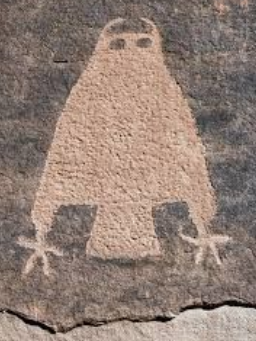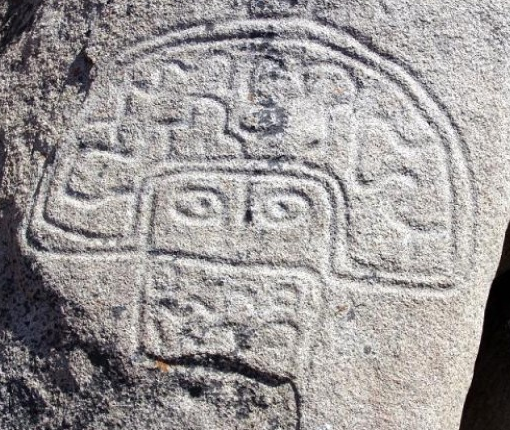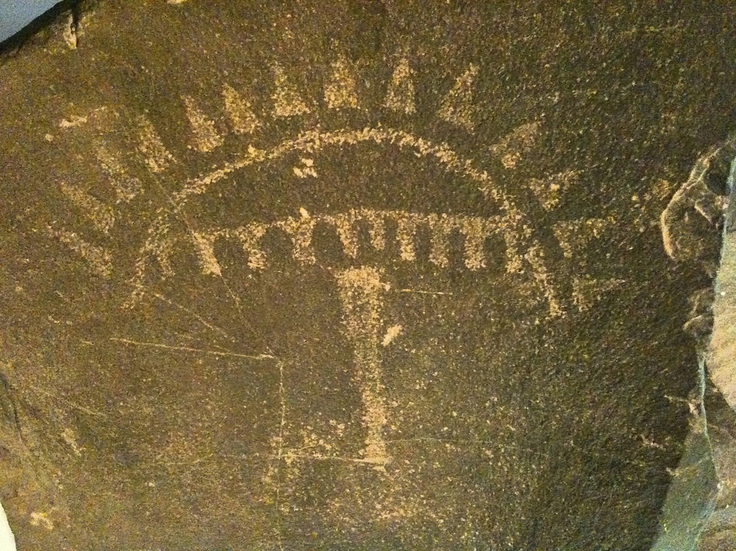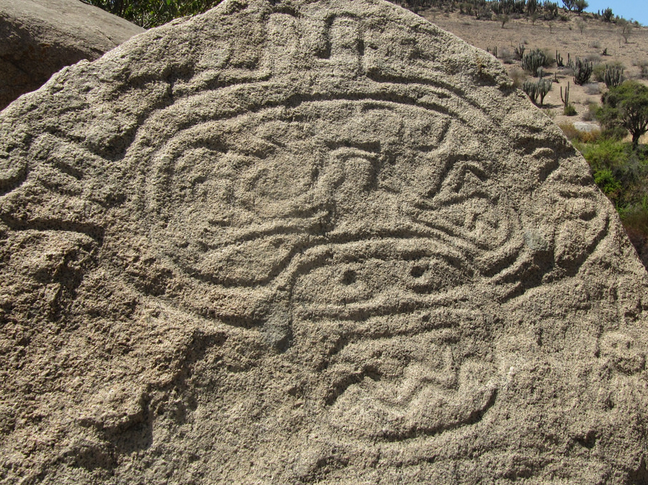Ancient Psychedelia: Alien Gods & Mushroom Goddesses
Online Book - Chapter 1, Page 12
Back to Online Book Mainpage / Next Page (Chapter 1, Page 13)
| Another disguise for the mushroom is the body of a deity such as those from the Mitchel River in Queensland Australia (1d) and others found throughout New Mexico (3i, k). Moab, Grand Canyon, Utah hosts an image of a mushroom deity (4b). There are also a couple examples of mushroom caps with faces, isolated by themselves. One of them is from the Wandjina people in Australia dated from 1500-2000 BC (1g), and another can be found at Valle del Encanto, Chile, dated 100-600 AD (7h). Mushroom images by themselves appear as well, for instance the one in the Maryhill Museum in WA (7d).  (4b) Moab, Grand Canyon, Utah  (7h) Valle del Encanto, Chile c. 100-600 AD  7d) Maryhill Museum WA |
 (7h) Valle del Encanto, Chile c. 100-600 AD I’m confident that with the progression of technology, photographers and the internet, more and more of these locations and images will become available over the next few years. Mescal beans (Sophora secundiflora) are powerfully psychoactive and have been found associated with 9000-year-old rock paintings at the Fate Bell Shelter site in Texas, as well as Frightful Cave site and the Bonfire Shelter site. At Frightful Cave mescal beans were found at every occupation level excavated from 9500 BC. all the way up through 570 AD. (27) Based on this evidence of cave art and the familiar scenes of cattle alongside mushrooms and mushroom headed people, it’s probably safe to conclude that these people were associating cattle with mushrooms and sometimes depicting scenes which arose from the visions they were having, other times depicting scenes of their simple hunting life. The association of cattle with mushrooms indicates a knowledge that the cow or bull dung was a source of psychedelic mushrooms and we may further conclude that early humans had considered the cow or bull as a sacred animal, being a source of visionary entheogens. A remarkable fact that should be brought up is that there are no depictions of war scenes between people in any of the known early cave art. Warfare was not something early humans seem to have participated in. Concerning the lack of weaponry and fighting between men in the ancient world, Gimbutas remarks, in Civilization of the Goddess: “There are no depictions or arms (weapons used against other humans) in Paleolithic cave paintings, nor are there remains of weapons used by man against man during the Neolithic of Old Europe. From some hundred and fifty paintings that survived at Catal Huyuk, there is not one scene of conflict or fighting or of war or torture.” This same situation occurs at Knossos, in early Minoan civilization. (28) (27) Russell, Shamanism and Drug Propaganda, p 24-25; Furst, Hallucinogens and Culture, 1988, page 9; Schultes and Hofmann, page 157 (28) ibid, p.24, 36; Gimbutas, Civilization of the Goddess, 1991, 324-344; Mellaart, Catal Huyuk, 1967; 79-209 |
Go Back to Page 11